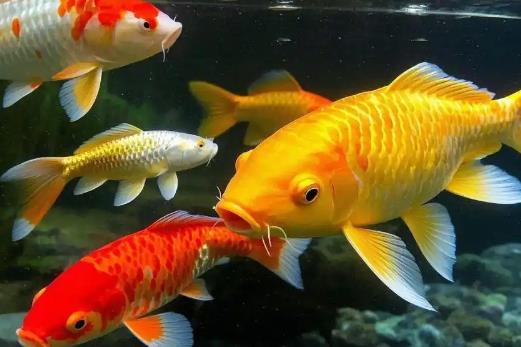The best combinations for mixed breeding of koi should follow the principles of similar habits, gentle temperaments, and matching body sizes. The scavenger fish, goldfish, and grass goldfish are recommended as the core choices. The specific analysis is as follows:

I. Basic Principles for Mixed Breeding
1. Adaptation to Water Temperature and Quality
Koi thrive in slightly alkaline water with a temperature range of 20-25°C. The fish to be mixed should be able to adapt to the same environment.
2. Gentle Temperament and No Aggression
Although koi are gentle, they have a sense of territory. It is necessary to avoid mixed breeding with fierce fish species (such as northern snakeheads).
3. Balanced Body Sizes to Prevent Accidental Injuries
The body sizes of the fish for mixed breeding should be similar to those of the koi. If they are too small, they are likely to be swallowed, and if they are too large, it will lead to overcrowding in the space.
II. Recommended Fish for Mixed Breeding
1. Scavenger Fish
Function: It cleans algae and residues, maintaining the water quality.
Note: After reaching adulthood, it is necessary to observe whether it attaches to the body surface of the koi.
2. Goldfish
Advantages: They belong to the same Cyprinidae family as koi, with highly similar habits, and their colors complement each other.
Key: Select varieties with similar body sizes, such as butterfly-tailed goldfish and ranchu goldfish.
3. Grass Goldfish
Characteristics: They have a fast swimming speed and strong adaptability, adding vitality to the fish tank.
Example: Red, white, or black grass goldfish create a sense of layered beauty when mixed with koi.
III. Other Feasible Options
1. Topmouth Gudgeon: They are small, agile, and have strong adaptability.
2. Prussian Carp: They are cold-resistant and tolerant of pollution, and they belong to the same family as koi.
3. Oscar Fish: They are relatively large in size but have a gentle temperament, and they require sufficient space.
IV. Precautions
1. Avoid High-Risk Combinations: For example, arowana fish require high-level breeding techniques, and fierce fish are likely to trigger fights.
2. Control the Fish Population Density: It is recommended that there should be no more than one medium-sized fish per 10 liters of water.
3. Regularly Monitor the Water Quality: Mixed breeding will increase the burden on the filtration system, so the frequency of water changes needs to be increased.
Example of a Successful Case: A fish enthusiast has been mixing and breeding koi, goldfish, and scavenger fish for three years. By changing 1/3 of the water every week and setting up a multi-layered filtration system, he has achieved ecological balance.
